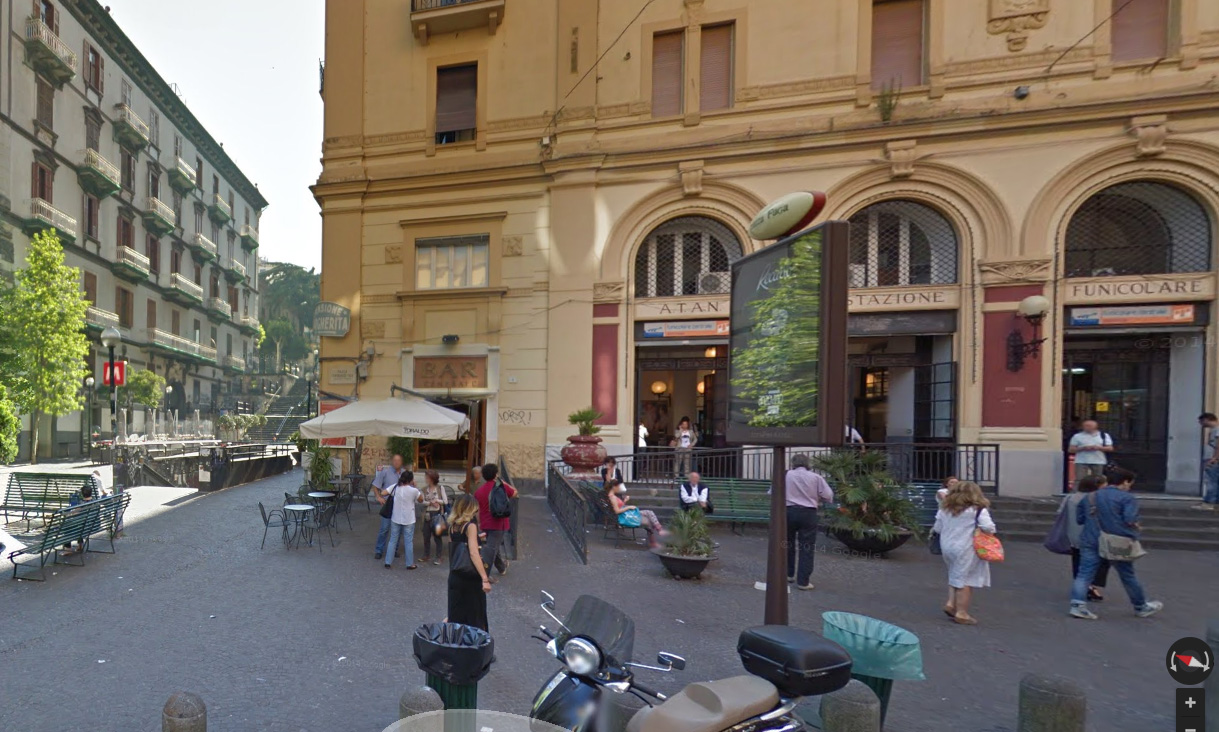The Vomero is one of the hilly districts of Naples, its inhabitants are called vomeresi.
The beginning of the history of this district is to be found in Roman times, the hill was called vomerese Paturcium (probably from Patulcius, name connected to Janus, the god to whom the hill was dedicated) and in the Middle Ages, by linguistic corruption , Patruscolo or Patruscio. The current name, certificate at the end of the sixteenth century (when it was referring not to the entire hill, but at an old house), presumably draws its origin from the ancient agricultural vocation and to the game of the plow, a hobby farmer who sanctioned as a winner who, with the ploughshare of the plow, he traced a furrow as straight as possible. However its activity related to the fields and the great harvest of vegetables grown for centuries earned him the nickname of Hill of broccoli.
The development of residential real Vomero began in the late nineteenth century, more precisely in 1885, with the foundation (as part of the law “for the cleansing of Naples”) of the New District and the design of a road network in knitted mesh and radial pattern that applied to the dictates rationalistic in vogue throughout the planning of the century European, according to the example of the Paris of Baron Haussmann (Italian urbanism similar experiences are found in Roman quarters Esquilino and Testaccio). From the first moment the Vomero was conceived as a residential area for the high-bourgeois classes: the beautiful villas and buildings in Liberty style that were built in large numbers at the beginning of the century around the Villa Floridiana and towards the area of Castel Sant ‘Elmo and San Martino formed until the mid-twentieth century the hallmark of the new district.
The oldest means of transportation in the neighborhood, built in the early decades of the ‘900, are the three of the four towns funiculars (Central Funicular and funicular of Chiaia and Montesanto funicular) connecting the Vomero to the city center.
In addition, the district is connected to the metro system, via the Line 1 of the Naples Metro (with bus Four Days, Gold Medals, Vanvitelli and Salvator Rosa).
Line 1 of the Naples Metro has helped streamline the vehicular traffic that ingorgava the access roads to the hill vomerese, quickly connecting the Vomero to the historic center and the districts of the northern outskirts of Naples.
The Vomero, as areas of the city center is not closed to vehicular traffic, being a largely commercial area and at the same time with high population density is one of the busiest districts in the city. Nevertheless, or perhaps to counter this phenomenon, maintains a pedestrian around the clock and always full of people and tourists, as well as its surroundings (Piazza Vanvitelli, via Cimarosa), thanks to the many venues that attract , especially on weekends, people of all ages. The pedestrian, formed originally (since 1994) by only way Alessandro Scarlatti, 11 November 2008, has also incorporated viaLuca Giordano, a major artery located between the top and bottom Vomero (ie, within the area of San Martino and Piazza Vanvitelli and the via Cilea and Via Belvedere) almost touching the oldest core of Vomero, the district Antignano.
source: wikipedia


